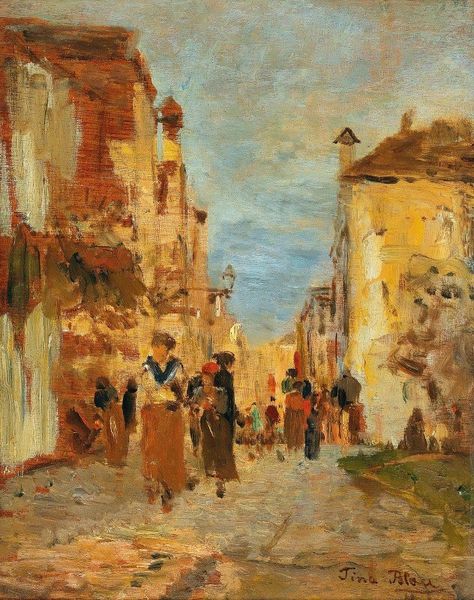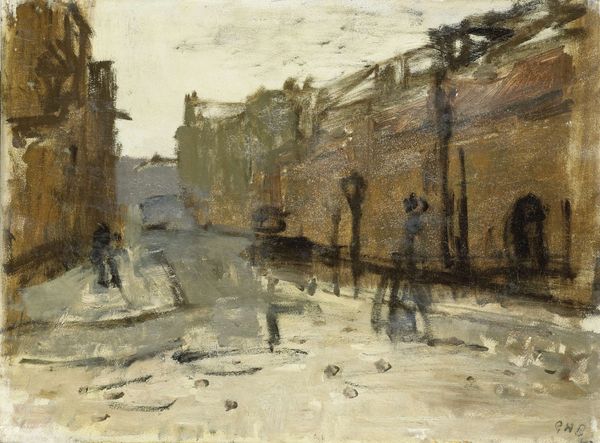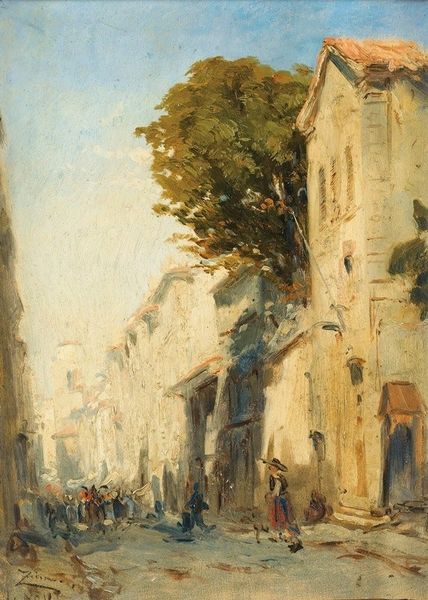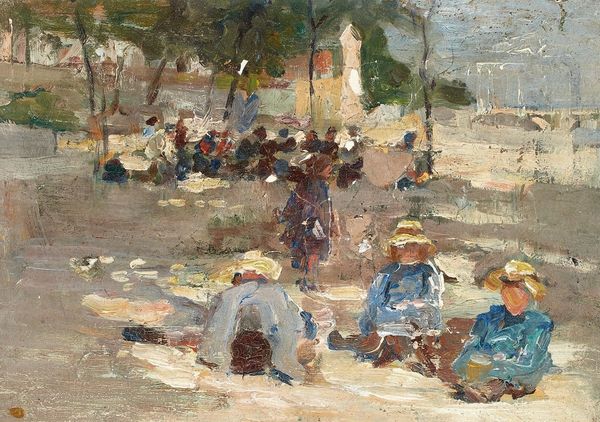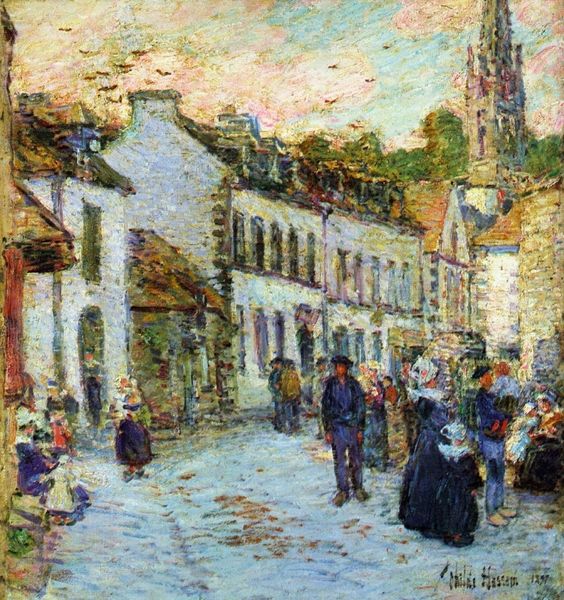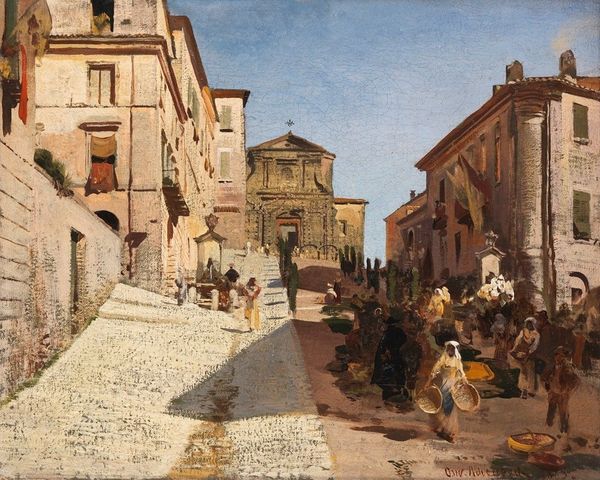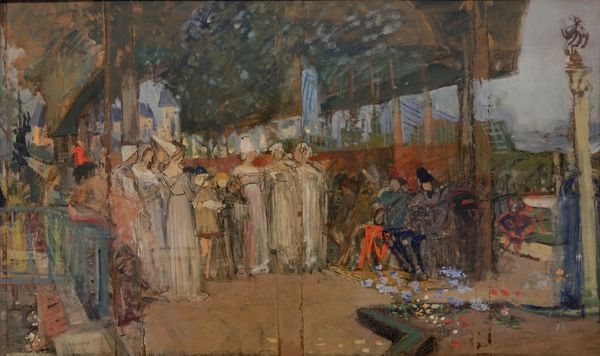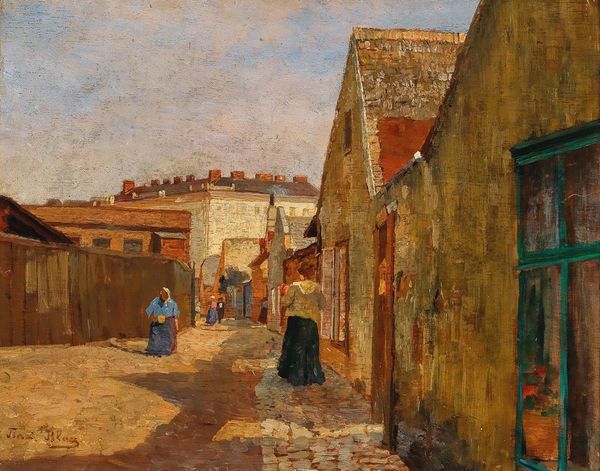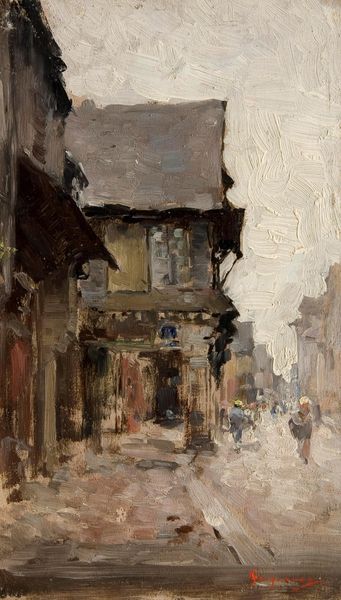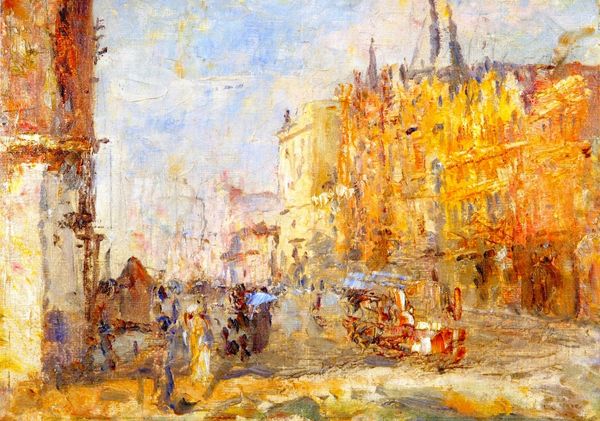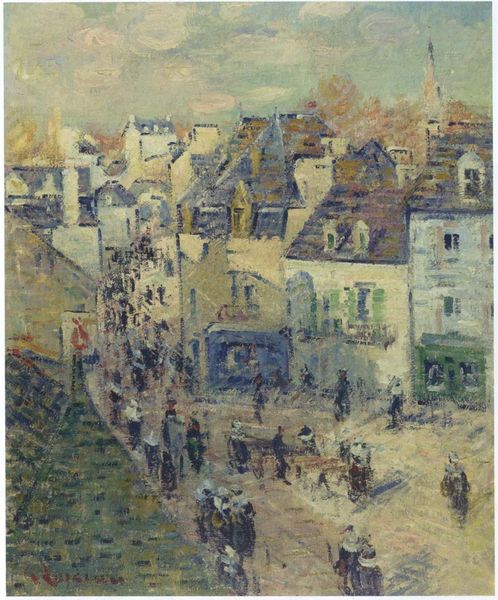
#
abstract expressionism
#
abstract painting
#
landscape
#
impressionist landscape
#
possibly oil pastel
#
fluid art
#
acrylic on canvas
#
paint stroke
#
painting painterly
#
watercolour bleed
#
watercolor
Copyright: Public Domain: Artvee
Curator: "Moret Street" is the title. The piece is attributed to Robert Henri. It seems to employ a medium like watercolor on what is most likely canvas. It's an evocative cityscape. Editor: Immediately, I’m struck by how active this painting is, despite the limited palette. The way he suggests figures, bustling down a street – it’s really compelling. It is painterly and seems loose, evocative. Curator: Absolutely. Look at how Henri uses the layering of colors, creating depth. Observe the street. There seems to be an edifice in the background that may loom, suggesting history. The artist's painting creates implied sight lines. The use of pigment gradation offers spatial dimension and weight. Editor: And I see a moment captured. Henri, around the turn of the century, was interested in depicting the vibrancy of modern, urban life, what we might call the "flâneur" experience of strolling through a city and observing. How might it feel to stand within this bustling, urban context? Curator: What about the psychological and sociopolitical subtexts, here? He seems disinterested in representing bourgeois existence. The quick, assured brushstrokes serve to imply a detachment. Editor: I think that detachment might point us towards a very active artist. Henri's works demonstrate an acute sensitivity to color and his artistic vision transcends mere depiction. He does appear interested in the common or urban spaces. I detect shades of what Baudelaire and Benjamin discuss on art of modernity and modern life in transition. Curator: One can infer meaning within the painting, even in its incompleteness. The painting contains implied structures that inform perception. I am thinking of the artist’s implied social commentary, filtered through painting as text. Editor: The artist captures the essence of urban movement and social space, allowing the audience to experience the modern and evolving streetscapes of the period. I think the use of form speaks about the constant reshaping of society and identity at the time. Curator: Yes, a fascinating interplay between the depicted subject matter, and the artist's subjectivity expressed through the visual language of painting. Editor: It really causes one to ponder the relationship between artist, art, and evolving society at the dawn of modernity.
Comments
No comments
Be the first to comment and join the conversation on the ultimate creative platform.
